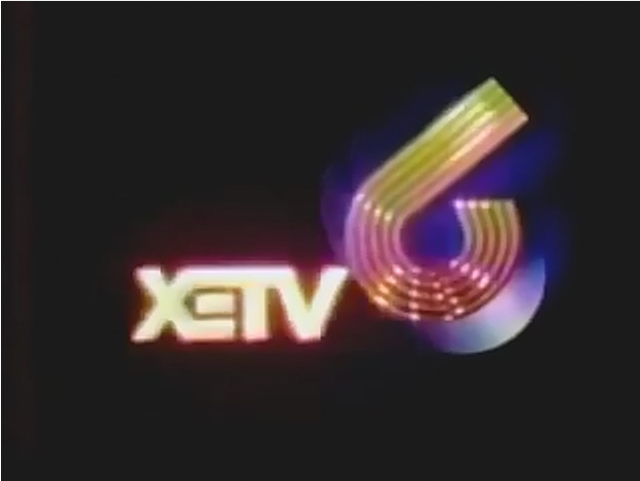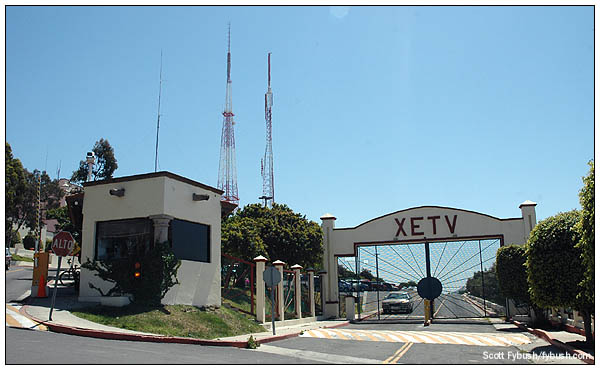It’s on Dailymotion.
BBC report on North Korean television:
What’s the progress of their digital transition?
Seemingly the majority of their digital upgrades are for the external focused satellite service. They do have a limited form of IPTV, so I think most homes seeing ‘digital’ in North Korea would be streaming it, rather than any actual terrestrial broadcasts.
Presumably, similar to their choice of PAL instead of the South Korean NTSC, they’d use DVB to avoid compatibility with the ATSC broadcasts of the South; but I’ve not seen anything that confirms either way or suggests they are actively broadcasting terrestrial digital.
Given that the means of accessing foreign media has moved to things like USB drives/SD cards filled with video files, rather than trying to catch overseas TV broadcasts covertly, they probably don’t have as much of a perceived censorship gain from making a switch in TV format - indeed encouraging people to modernise receivers would likely just increase the amount of people with access to devices capable of viewing foreign media.
Toronto Raptors’ win in game 6 of NBA finals broke viewership records in Canada. Bell Media says an average audience of 7.7 million viewers watched the Raptors win the NBA title in Thursday night’s game against the Golden State Warriors. The number includes viewers on TSN, CTV and the RDS French-language broadcast, but does not include Canadians watching the American feed.
In the US, game 6 averaged 18.34 million viewers and a 18-49 rating of 6.4 on ABC. It was up against Fox’s coverage of US Open golf (3.47 million viewers, 0.7 demo rating) for around 90 minutes.
which is quite common, especially down south. i used to live in Terrace Bay Ontario (which is almost north of green bay) and it was easy to get Directv from the states - you’d go across the boarder and buy a self install kit and have the bill come out of your credit card. For the billing address you’d put your american based PO Box (which most poeple had)
I also assume US terrestrial broadcasts in border areas are also receivable in Canada and vice versa.
Yes, and in the town I lived in we would get the American free channels on basic cable as well
Were they subjected to ‘simultaneous substitution’?
Never heard that term before. Gave it a quick google. Quite interesting.
The only example I can think of of this in Australia is on Foxtel Now/Kayo when streaming Channel 7’s AFL matches. The Fox Footy feed is substituted for Channel 7’s full feed including advertising.
Nearly all prime time shows and major sporting events get the simsub treatment. The huge exception is the Super Bowl as there was enough outcry from Canadian wanting to watch the US commercials, that the overseeing body ruled that the SB can’t be simsubbed. Bell Media (who currently hold the rights to the SB) are taking the ruling to court to get it reversed.
Just been doing a bit of research into Canadian TV, and I was surprised to learn that throughout most of its history, many CBC stations were actually privately owned, and chose to affiliate with the public broadcaster to take much of its programming schedule. It wasn’t until recently (2016) that they got rid of all of their private affiliates.
Much of the country is not covered by terrestrial TV service outside of the major cities - in 2012 CBC turned off all their rebroadcast transmitters (this would be the equivalent of turning off all transmitters outside of capital cities here in Australia!), but because of cable and satellite penetration this was not a big deal.
I guess it makes sense if you remember that CBC has advertising.
BA and FTA will turn off theirs too despite no cable or suitable internet. Certain of it!
TXA planning to be on for the next 20 years. Ridiculous. Radio has been on since Marconi harnessed it.
There is a Cantonese police drama titled The Man Who Kills Troubles which premieres on TVB in Hong Kong on Monday, October 14 (and on TVB Australia the next night), one of three series scheduled to celebrate the broadcaster’s 52nd anniversary. What is special about this drama is that it has a storyline originating in Melbourne relating to a fictional Chinese gang. Filming took in various locations across the city in mid 2018, and in this promo you may recognise these locations.
Even the promotional poster features the Melbourne city skyline.
Am intrigued by the over bleed of TV Station signals over international borders. I recently came across it while in Toronto where the hotel I was staying had both US and Canadian channels.
With it only being 100kms from the US Border (as the crow flies) it could easily be picked up terrestrially. Do wonder what the legalities of it are.
Below is an old sign off of a Buffalo Station where they play both national anthems.
In Europe, with many countries occupying a ralatively small land area, terrestrial overspill has long been a fact of life. Here’s a passage from a book published in 1972 (The Universal Eye: World Television in the Seventies by Timothy Green):
“The ordinary family in Brussels can, with a good aerial and a modified television set, view no less than eleven channels in five countries. Besides Belgium’s own two channels – one broadcasting in French, the other in Flemish – Belgians have a choice of two channels from ORTF in France (three from 1972 onwards), three from Germany, two from the Netherlands and one from Luxembourg.”
And here’s a passage about British TV (from the Channel Islands) being picked up in France in the late '60s, from John Ardagh’s 1968 book The New French Revolution :
“And even ITV and BBC in the Channel Islands attract a small audience in the Contentin, around St. Malo, and as far inland as Rennes. The local paper, Ouest-France, publishes the British programmes; in Dinard there is a Cercle des Amis de Channel (Channel TV) and a holiday hotel in Cartelet altered its dinner-hour so that its British summer guests could watch Coronation Street! […] There is even some French advertising on Channel TV, though the ITA does not regard this as strictly legal.”
Some other excerpts about foreign TV in France from the same book:
“Tele-Luxembourg […] has a viewership of one million in Lorraine, at least three times as many as in Luxembourg iteslf: in Nancy, 98 per cent of sets are adapted to receive it. In Provence, Tele Monte Carlo […] has been making a huge offensive and also claims a viewership of a million or more, from Menton to Marseille. Both these TV companies put their emphasis on variety, quiz-games, and popular films; there is virtually no culture, and within their reception zones they attract more viewers than the two ORTF networks together, especially among the working class. In German-speaking Alsace, 90 percent of sets are adapted to one or other German Rundfunk.[…]”
XETV in Tijuana, Mexico was once the CW (and before that, FOX) affiliate for San Diego on the other side of the border. It also used to broadcast both the Mexican and American national anthems.
Since June 2017, it is now part of the Mexican Canal 5.
I posted this a while ago in another thread, but since we’re talking about cross-border television, I’ll repost it here:
The northwestern Mexican city of Tijuana was home to one of the world’s most interesting stations: XETV-6. (All Mexican callsigns begin with the letter “X”.) Although it was licensed to Tijuana and had its transmitter there, for years the station broadcast in English for the city of San Diego, just across the U.S.-Mexican border.

Tijuana (Bajanorte.com)

San Diego (forbestravelguide.com)
XETV broadcast in English from its launch in 1953 until it switched to Spanish-language programming in 2017. For the first two decades, it served as San Diego’s ABC affiliate. It lost that affiliation as a result of a court battle, and it became an independent. When the Fox network was established, the station became its affiliate for the San Diego market. It spent its final years as an affiliate of the CW network.
For years, films were taken from San Diego across the border to Tijuana, and even the local news originated in the Mexican City. Later, the FCC allowed the station to maintain a production facility in San Diego, so the signal was beamed from there to the transmitter in Tijuana.
Here’s a XETV news update from 1977:
Here’s a sign-on from 2017, XETV’s final year as an English-language station. The Mexican national anthem is followed by a sign-on announcement in English and Spanish. The clip also includes the start of XETV’s morning news:
And here’s a behind-the-scenes tour of XETV’s facilities in its final years as an English-language station:
https://www.fybush.com/sites/2009/site-090213.html
This is how XETV looked back at its history on its final day as an English-language operation:
Sorry that I stepped on your post, Herb! But you know what they say about great minds… 
Would this have been possible in 1968?
France used an 819 line system and the UK used a 405 line system.
The only cross-compatible system would have been the 625 line system which was only used by BBC2 at the time in the UK, and a select range of transmitters in France. Not to mention that the receivers in France would have cost an absolute fortune (as they would have been colour receivers).
It would be another 8 years until any 625 line services would launch in the Channel Islands (1976!)



